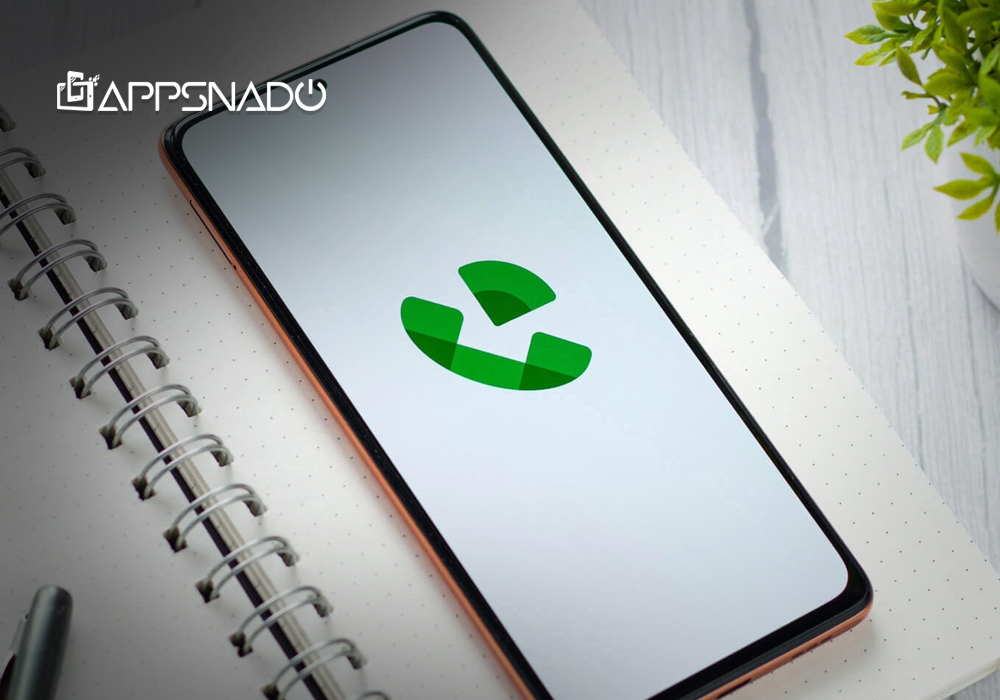If you are someone who has an interest in learning about different developmental procedures in the tech world, you might be well aware of the concept of prototypes. Or you might have read this term in the steps to creating something but do not know what it means or what purpose it serves. Be it a beginner or a curious learner, this article will help you learn important information related to the world of prototypes. We will be focusing on the step-by-step procedure to create interactive prototypes, along with the types and methods of prototyping. So, without wasting our time, let’s start the topic.
Prototype: An Introduction
The first step is to understand what a prototype is. By definition, a prototype is defined as an early version of a product. It is used to create further variations or versions of the same product in the future. Before a new item is made available for purchase, engineers and product developers frequently construct test versions of it, which are the prototypes of the product.
Prototypes are useful as they offer a means of putting a concept to the test in order to validate it, confirm the functionality of the system, and identify areas for improvement before the product is launched and made available to the general public.
If we look at the origins of the term ‘prototype,’ it originated from the Latin words proto, which means first, and typus, which means shape or model. This implies that a prototype is the first model of a product to be tested and then deployed.
A List Of Types Of Prototypes
There is a misconception regarding prototypes. People often think that a prototype is just a single type of product being tested. Whereas, in reality, this is not the case. There are many types of prototypes that serve their own purpose in testing digital as well as physical products. It depends on the developmental team to identify and select the type that will best suit their cause.
Some of the types of prototypes are
- Sketches And Diagrams
- Physical Model
- Wireframe.
- Role-play Through VR And AR Technology.
- Video Prototype.
- Others
- Sketches And Diagrams
We are all familiar with the way a sketch or diagram works. In a similar way, drawing an initial concept or idea of the product with the use of paper and a pen helps form this type of prototype. For instance, sketching a product on a napkin, paper, whiteboard, etc., are all forms of sketches and diagrams. Though it is one of the oldest or most traditional forms of creating prototypes, this method is still followed by many people for initial planning and design.
- Physical Model
A physical model of the product helps in understanding and getting a picture of the finalized product that the developer has in mind. It is not necessary to include the working or functional attributes of the product in the model, as it will only give you a rough idea of the product. Physical models are helpful when you have to create or design on a large scale, for instance, in developing architectural designs, etc.
- Wireframe
Wireframes are one of the most common types of prototypes used by developers. A wireframe works as the product’s digital diagram or layout. Wireframes are pretty easy to create, as with the help of different tools or software, anyone in the development team can make these prototypes for testing. It is commonly used for websites, software, and other digital devices.
- Role-play Through VR And AR Technology
Virtual Reality (VR) and Augmented Reality (AR) technology have also successfully entered the realm of prototypes. With the help of these technological advancements, designers and developers can easily test a product while being a part of it. In other words, AR and VR technology have opened the door to interactive prototyping and immersive testing of products. For instance, developers can easily test the initial design of a theme park by walking, running, or just being a part of the park.
- Video Prototype
One of the types of prototypes is known as a video prototype. This method allows the creation of animated videos or simulations that explain and graphically portray a project. Video prototypes are helpful as they can be shown to other people in the development team as well as to users or consumers to get an idea of the product and what purpose it will serve.
- Others
Other types of prototypes include horizontal and vertical prototypes, feasibility prototypes, working model prototypes, 3D printing prototypes, and rapid model prototypes. All of these types are designed and developed to create interactive prototypes in order for people to get an idea of the product or test the working functionality of the product from the user’s end.
You May Also Read These
The Significant Methods Of Prototyping
In the above-mentioned section of the article, we discussed some of the types of prototypes that developers utilize to test a product or get an idea of the product they want to build. But now, we will be reviewing the methods that allow or enable a certain type of prototype to be functional. These methods are
- Feasibility Prototypes.
- Low-Fidelity User Prototypes
- High-Fidelity User Prototypes
- Live-Data Prototypes.
- Feasibility Prototypes
Prototypes, when tested through the feasibility prototyping method, allow developers and designers to test the functionality or technical workings of the product. This method is helpful to see if the idea is technically feasible.
The desired functionality, or part of the technicalities, is precisely implemented in the feasibility prototype. This helps in detecting flaws in the design. The engineering of the final product is then built upon this prototype.
- Low-Fidelity User Prototypes
Low-fidelity user prototyping is the most helpful method of testing the usability of a product. By its name, it shows that this method is focused on experiencing a chunk of the user experience of the product. With the help of a wireframe, a UX designer might utilize this method to test the features and workings of a product to modify and validate it.
- High-Fidelity User Prototypes
High-fidelity user prototyping is different from low-fidelity user prototyping, as this method is focused on testing a more mature and realistic form of the product. This might take some time and effort on the developer’s end, but it helps them understand and visualize the final product in a better way.
- Live-Data Prototypes
Live-data prototyping consists of a prototype that has built-in analytical capabilities for gathering real-time user behavior and data. This method is utilized when developers want to test if a consumer would be interested in a new feature before launching a product.
How To Select The Right Prototype For Your Product
Since there are so many types of prototypes and methods of prototyping available in the industry, people often get confused as to how a developer would select the right kind of prototype for their product. Well, there are some steps and points that help creators and designers select and apply the most suitable type and method. These steps are
- Identifying The Stage Of Development Of The Product
- Identifying The Cause Of Creating A Prototype
- Identifying The Outcome Expected By Creating Interactive Prototypes
- Identifying The Stage Of Development Of The Product
There are three stages to any developmental procedure. The first is the early stage, where the product is just roughly designed; the growth stage is when developers are midway through creating the product. And lastly, the maturity stage, where the product is in its final stages of production and launch. It is crucial for the developers to identify the stage of development to select what kind of prototype they want to utilize, as every kind has its own applicability duration. For instance, you cannot use sketches and drawings in the final stage.
- Identifying The Cause Of Creating A Prototype
The next step in selecting a prototype is identifying the cause or purpose of creating one. Some of the most common causes are to identify what kind of product or feature you want to build, how the feature or product is beneficial and being utilized by users, and lastly, why a feature or product is causing issues in functionality. The purpose of creating a prototype is to help you save time and effort from the trial-and-error method of selecting irrelevant types and procedures.
- Identifying The Outcome Expected By Creating Interactive Prototypes
The last point that helps developers select a specific type of prototype is identifying the outcome they are expecting to achieve with the help of the prototype. Some aim at achieving insights into user experience, functionality of a new feature, assisting the development team, etc.
Interactive Prototypes: Definition
Until now, we all knew what a prototype was and how it worked. But there was a flaw in the traditional way of prototyping that was detected by the developers. These prototypes were seen to have a limited frame of reference for accessing information regarding the functionality of the product or getting knowledge about the user experience, as they allowed only a limited amount of access.
However, the new and advanced form of interactive prototyping allows developers to create interactive prototyping that offers users the opportunity to experience services and solutions that they would get from the final product. It enables creators to optimize the user experience in the best way possible as they get authentic feedback as well as the trust of consumers before launching the product.
You May Also Like This: Why is a Quality Assurance Tester Needed on a Software Development Team?
A Step-By-Step Guide On How To Create Interactive Prototypes
In this section of the article, we will be discussing the steps that go into creating interactive prototyping.
- Research.
- Designing A Rough Sketch
- Designing A Virtual Product
- Look Out For Assistance
- Create The Prototype
- Modify If Needed.
- Research
The first step to creating an interactive prototype requires the designer to conduct market research. It is necessary to do so in order to review or analyze similar products available on the market. This will give you insight into how you can make our product unique and innovative. This also helps in taking notes regarding the functionality and design of similar products.
- Designing A Rough Sketch
After conducting market research, it is essential to create a rough sketch or diagram of the idea or product that you have in mind. You do not have to add the technicalities of the working product. Instead, you can just focus on how the product will physically look.
- Designing A Virtual Product
After you have a rough sketch of the product in hand, it is now time to transform it into a 3D virtual product design. There are different 3D software programs that help developers create virtual images. A 3D image might help you understand the material and design points that would go into the product and how they will easily work with the engineering of the final product.
- Look Out For Assistance
Now that you have both a rough sketch and a virtual design of the product, you might have to figure out if you will need the help of a professional in developing a prototype. If your prototype includes specific machinery requirements, it is better to take guidance from a skilled prototype developer or engineer to save time and effort.
- Create The Prototype
Once you have all the sketches and the required assistance, you can easily kickstart the process to create interactive prototypes. You might need the help of your proof of concept (POC), which validates the functionality of your product, and the designs that will help you generate an image of the interactive prototype.
- Modify If Needed
After providing the prototype for testing purposes to the users or different developers, you might get notified regarding flaws in the design or engineering of the product. It is essential to value the feedback and modify or update any changes if needed, taking as much time as is required before launching the final product on the market.
Bottom Line: A Complete Guide On How To Create Interactive Prototypes
Prototypes play an important role in the development of a functional, effective, and efficient product. With the right decisions made, and methods followed, developers can easily minimize the time spent fixing errors or designing a product with the help of prototypes.
You May Also Like This: Your Ultimate Guide To Using The Uber Driver App







